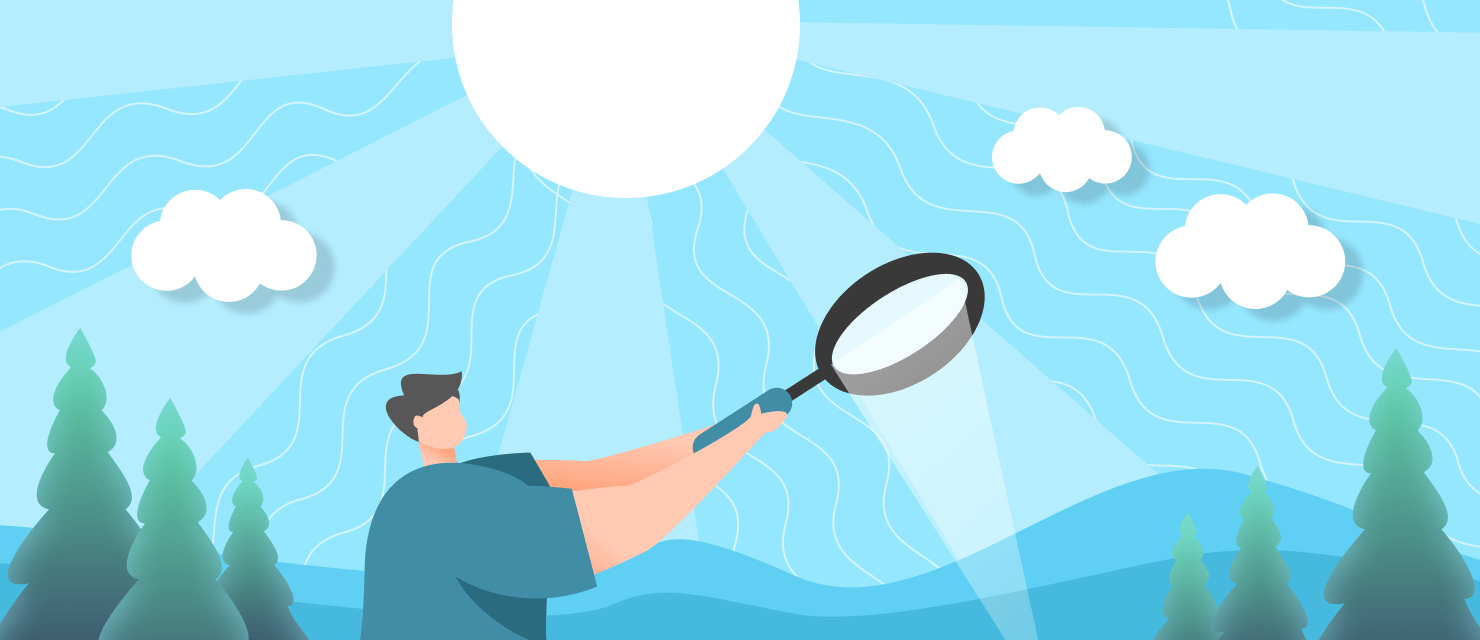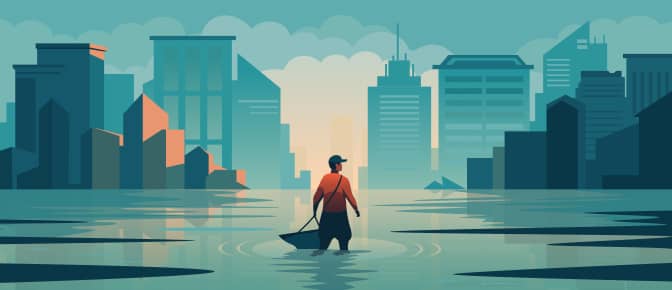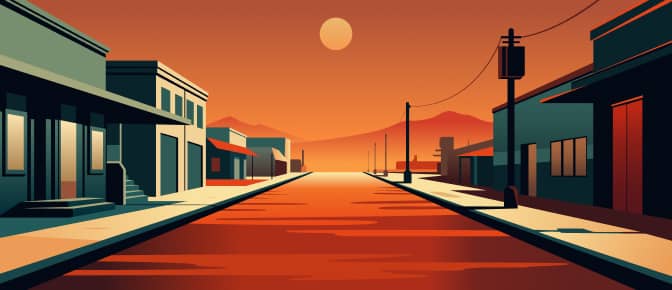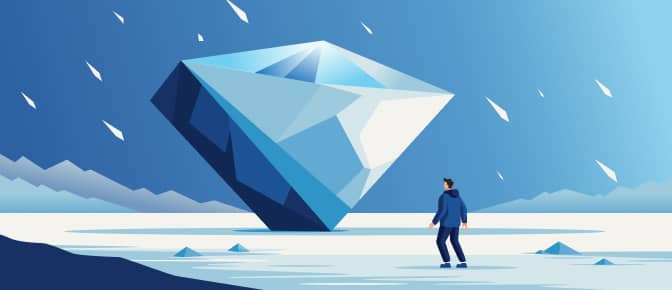In late June and early July 2023, hundreds of intensive wildfires were raging in Canada, making 2023 the worst fire season on record. Smoke from the fire drifted into the United States, affecting more than a third of the US population because of the low air quality index. Over 250 fires went out of control because they grew very rapidly.
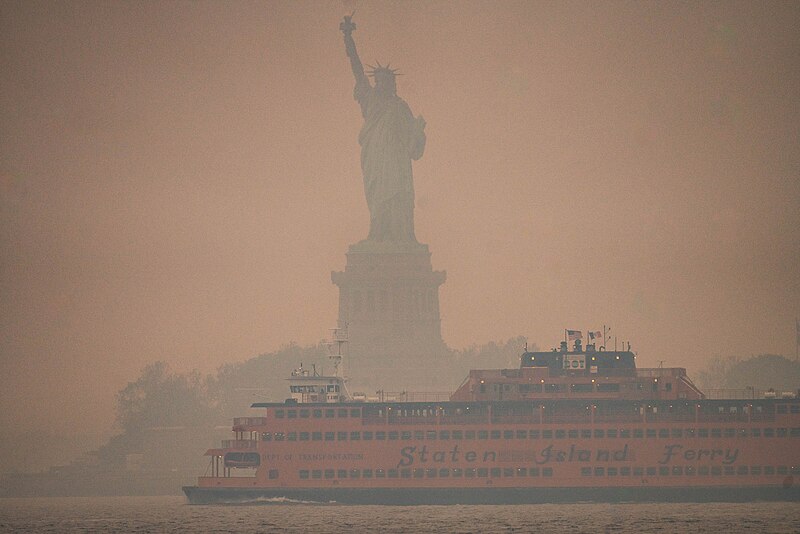 Source: Anthony Quintano, CC BY 2.0, via Wikimedia Commons
Source: Anthony Quintano, CC BY 2.0, via Wikimedia Commons
But no sooner had both countries recovered from the disaster than another record-breaking series of wildfires hit Hawaii in August 2023. This blaze has become the deadliest one of the last 100 years, with over 100 deadly victims. The Hawaii forest fire spread so quickly that some local residents rushed into the ocean to escape. It also destroyed the historic town of Lāhainā.
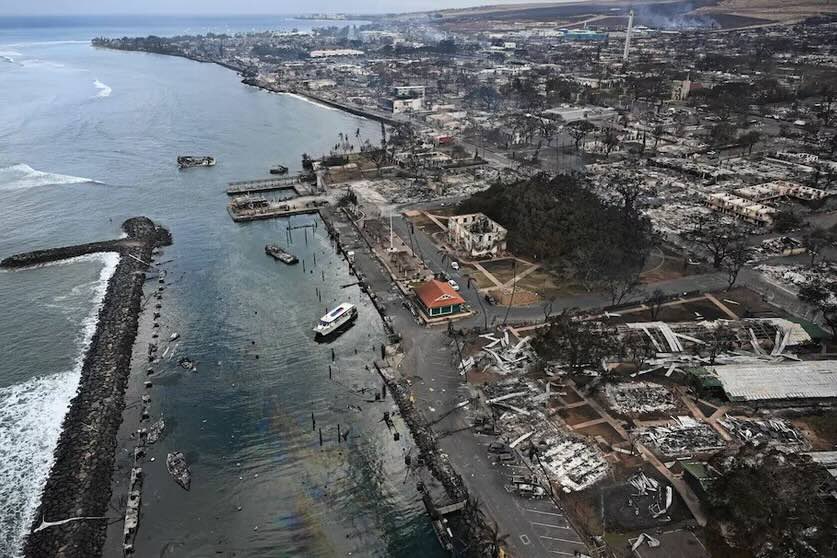 Source: Patrick T. Fallon/AFP/Getty Images, Washington Post
Source: Patrick T. Fallon/AFP/Getty Images, Washington Post
In this article, we are going to find out how wildfires develop and what causes them to grow so quickly.
How Wildfires Spread
Wildfires are complex and dynamic events that can happen due to a variety of factors, including weather conditions, terrain, vegetation type, and human activities. They spread primarily through a combination of three main processes: ignition, fuel, and weather.
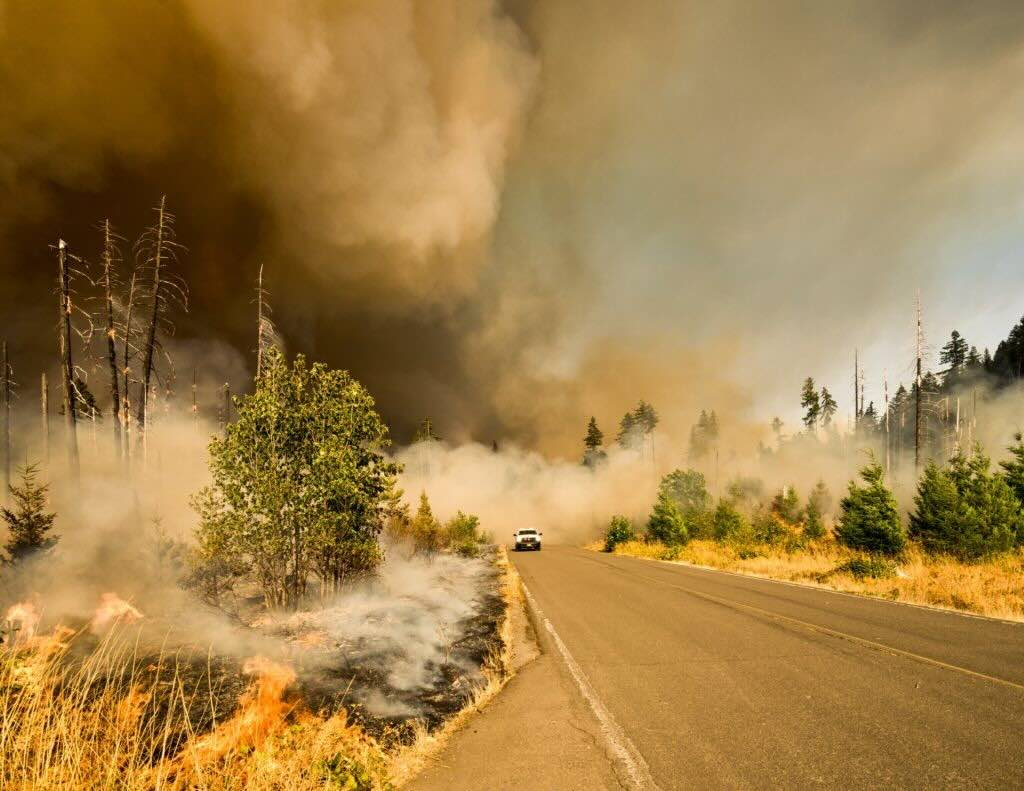 Source: Marcus Kauffman on Unsplash
Source: Marcus Kauffman on Unsplash
- Ignition. Wildfires begin with an ignition source, which could be natural (lightning strikes) or human-caused (campfires, discarded cigarette butts, power lines, etc.). Once ignited, a small fire needs heat to continue growing. The heat generated from the initial ignition can cause nearby vegetation to dry out and become more susceptible to ignition.
- Fuel. Fuel refers to the combustible material that a fire can consume. This includes vegetation such as grass, shrubs, trees, and dead leaves. The type, amount, and moisture content of the fuel play a crucial role in how a fire spreads. Drier and more abundant fuel provides more material for the fire to burn and grow.
- Weather. Weather conditions are a significant factor in determining the behavior and spreading of a wildfire. Wind, humidity, temperature, and atmospheric stability influence the rate at which a fire can grow. Wind, in particular, is a critical factor. Strong winds can carry embers ahead of the main fire. This ignites spot fires in new areas, which can speed up the growth of the wildfire.
The spreading of a wildfire can be categorized into three main ways:
- Ground spread. Some fires burn under the ground, in the rotten roots and the layer of dead plants on the soil. This layer is made of leaves, bark, needles, and twigs that have fallen from the trees. These fires don’t have flames, only heat, and they can last for a long time without being noticed. This is because they hardly make any smoke and move slowly.
- Surface spread. This occurs when the fire moves along the ground and burns needles, moss, lichen, and bark. It also burns the plants, bushes, small trees, and young trees that are close to the ground. The heat generated by the fire dries out the vegetation, causing it to become more flammable.
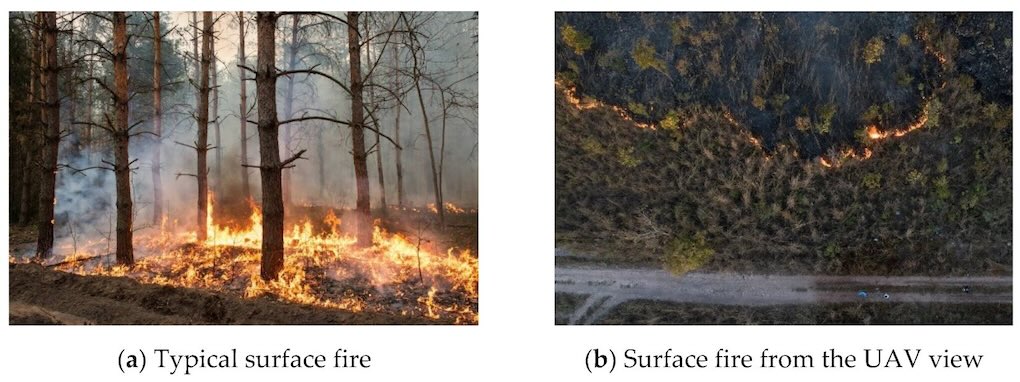 Source: MDPI
Source: MDPI
- Crown spread. When a fire reaches the tops of trees or shrubs, it can spread rapidly through the canopy. This type of fire is known as a crown fire. Crown fires can be active and passive. Passive ones only burn one tree or a few trees at a time (this is called torching). Active ones burn all the trees together, from the ground to the top, like a big wall of fire. They are particularly dangerous and can lead to rapid and erratic fire behavior.
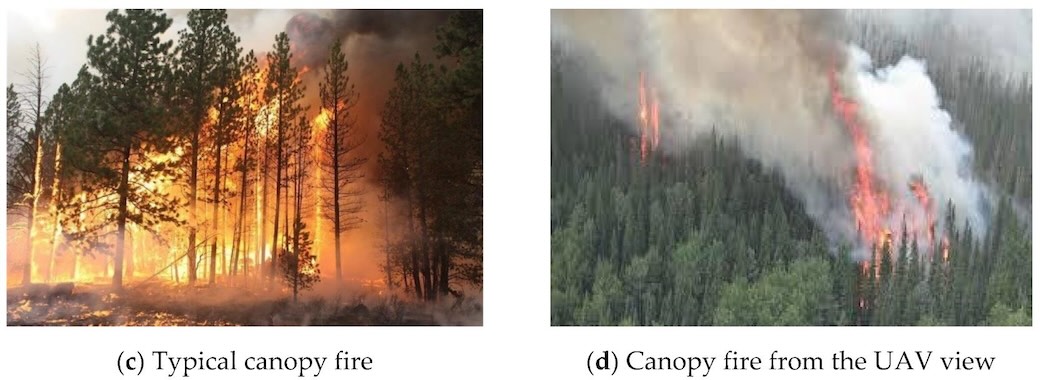 Source: MDPI
Source: MDPI
There can also be a mix of surface and crown fire behavior depending on the conditions. The combination of wind-driven ember spotting, dry fuel, and challenging terrain can lead to extremely fast-moving and unpredictable fires.
Firefighters and fire management teams use various strategies to control and mitigate forest fires. These strategies often involve:
- creating firebreaks (cleared areas with reduced fuel),
- using controlled burns to remove potential fuel,
- deploying water and fire retardants,
- and employing tactics to guide the fire away from populated areas.
How Forest Fires Spread: Real-Life Examples
Here are some examples of the fastest and deadliest wildfires that grew rapidly due to ignition, fuel, and weather factors:
Big Scrub Fire (1935) in Florida, USA
A huge blaze burned a large area of the Ocala National Forest, Florida in 1935. It was the fastest-spreading forest fire ever recorded. The fire was moving at a speed of 100 feet per second (30 meters per second), or 6,000 acres per hour. In just 4 hours, it burned land of more than 35,000 acres. The destructive wildfire started from a lightning strike and was made worse by the strong wind. It ruined 100 buildings and killed one person.
Black Saturday Bushfires (2009) in Australia
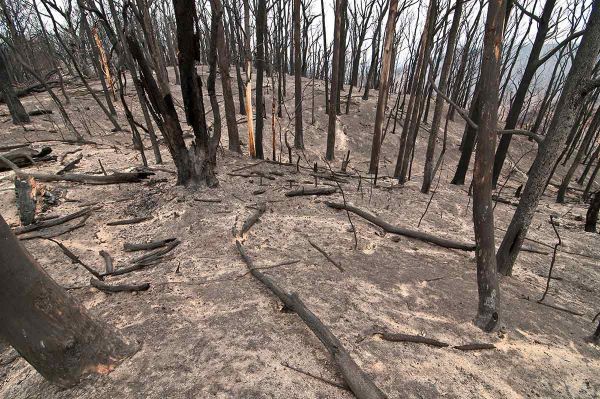 Source: National Museum of Australia
Source: National Museum of Australia
On February 7, 2009, very strong winds from the north west blew over the state of Victoria. They brought hot, dry air from the middle of Australia. The storm made it very easy for fires to start and spread. When the winds knocked down some power lines, the resulting sparks ignited the fire.
The blazes spread through densely vegetated areas. Dry eucalyptus forests and grasslands that had been experiencing a prolonged drought acted as fuel. Strong winds and low humidity also created perfect conditions for rapid fire growth.
Peshtigo Fire (1871) in Wisconsin, USA
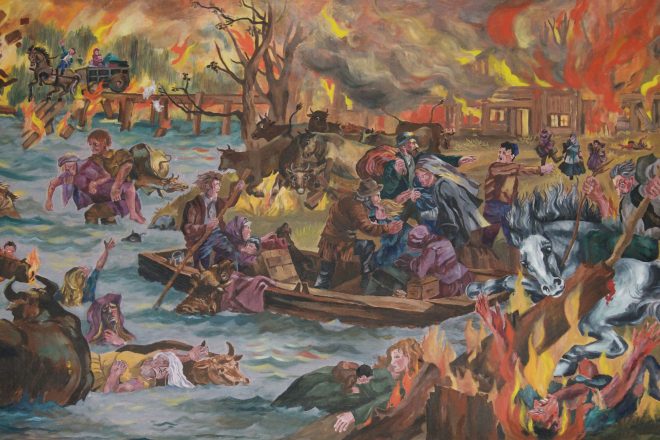 Source: Peshtigo Fire Museum
Source: Peshtigo Fire Museum
The Peshtigo Fire was likely ignited by a combination of sources, including sparks from passing trains, logging operations, and slash burning. The exact cause is uncertain, but these human activities amidst a severe drought likely contributed to the fire’s ignition.
The region was covered in dense pine forests and had an accumulation of dead and dry leaves and fallen trees. The logging industry had left behind a significant amount of debris, creating ample fuel for the fire to consume.
This large wildfire occurred on the same day as the Great Fire of Chicago: October 8, 1871. A combination of drought conditions, high temperatures, and strong winds created ideal conditions for the rapid spreading of the fire. The firestorm generated by the Peshtigo Fire created its own weather conditions. Intense heat and winds were feeding the flames and carrying burning debris for miles. The Peshtigo Fire became one of the world’s worst wildfires and the deadliest wildfire in recorded history. The exact number of victims is unknown but approximate data speak of about 1,100 victims.
Fort McMurray Wildfire (2016) in Canada
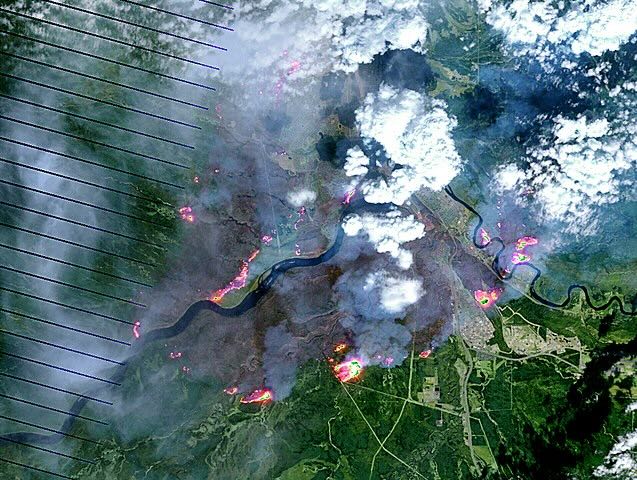 Source: Wikipedia
Source: Wikipedia
The Fort McMurray Wildfire began on May 1, 2016. It was probably ignited by a human-caused source, such as a campfire or discarded cigarette.
The fire spread through forests and wooded areas in Alberta, Canada. The region had experienced a warm and dry spring, which led to increased fuel dryness. The presence of dead trees and vegetation from previous years also contributed to the fire’s intensity.
Extreme weather conditions, including high temperatures, low humidity, and high winds made the fire stronger. These conditions allowed the fire to rapidly spread and generate spot fires ahead of the main front.
Rim Fire (2012) in California, USA
The Rim Fire, a devastating forest blaze that swept through the Sierra Nevada, ignited on August 17, 2013. It was sparked by an illegal hunter’s actions in the Stanislaus National Forest. The fire got bigger and bigger because of the hot and dry weather, having become one of the largest and worst fires in California.
Rim Fire burned only 40 acres when it was first spotted. But in less than two days, it grew to 10,000 acres because of the thick plants in the narrow valleys of the Stanislaus National Forest. This blaze ranks in the top five most destructive wildfires in California history.
| Fire | Year | Acres Burned |
|---|---|---|
| August Complex | 2020 | 1,032,648 |
| Mendocino Complex | 2018 | 459,123 |
| Thomas | 2017 | 281,893 |
| Cedar | 2003 | 273,246 |
| Rim | 2013 | 257,314 |
Camp Fire (2018) in California, USA
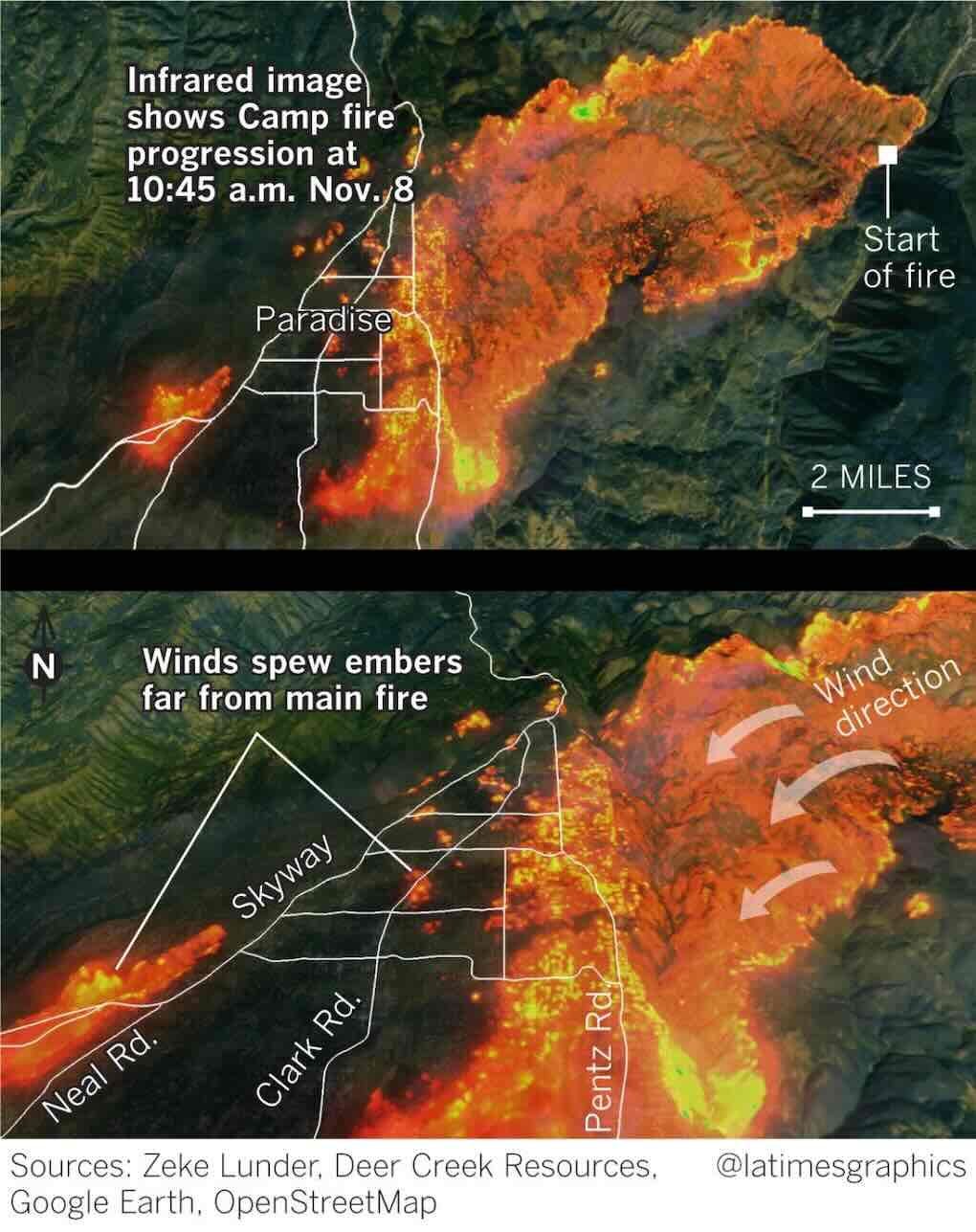 The Camp Fire started on November 8, 2018, and was caused by a faulty power transmission line.
The Camp Fire started on November 8, 2018, and was caused by a faulty power transmission line.
The blaze propagated through a community with dense housing and vegetation. The fire occurred during a period of drought and high winds, which quickly spread the flames and embers. The strong winds carried burning debris, starting spot blazes in various locations and causing the fire to grow.
The Camp Fire burned the entire town of Paradise in Northern California and killed 85 people, becoming the deadliest wildfire of the 21st century. However, in 2023, the title of the deadliest wildfire went to the fire in Hawaii.
Maui Wildfires (2023) in Hawaii, USA
A series of fires started on the island of Maui in Hawaii, USA, in early August 2023. The fire quickly spread because of the dry and windy weather. A strong high-pressure area north of Hawaii and Hurricane Dora to the south caused these weather conditions.
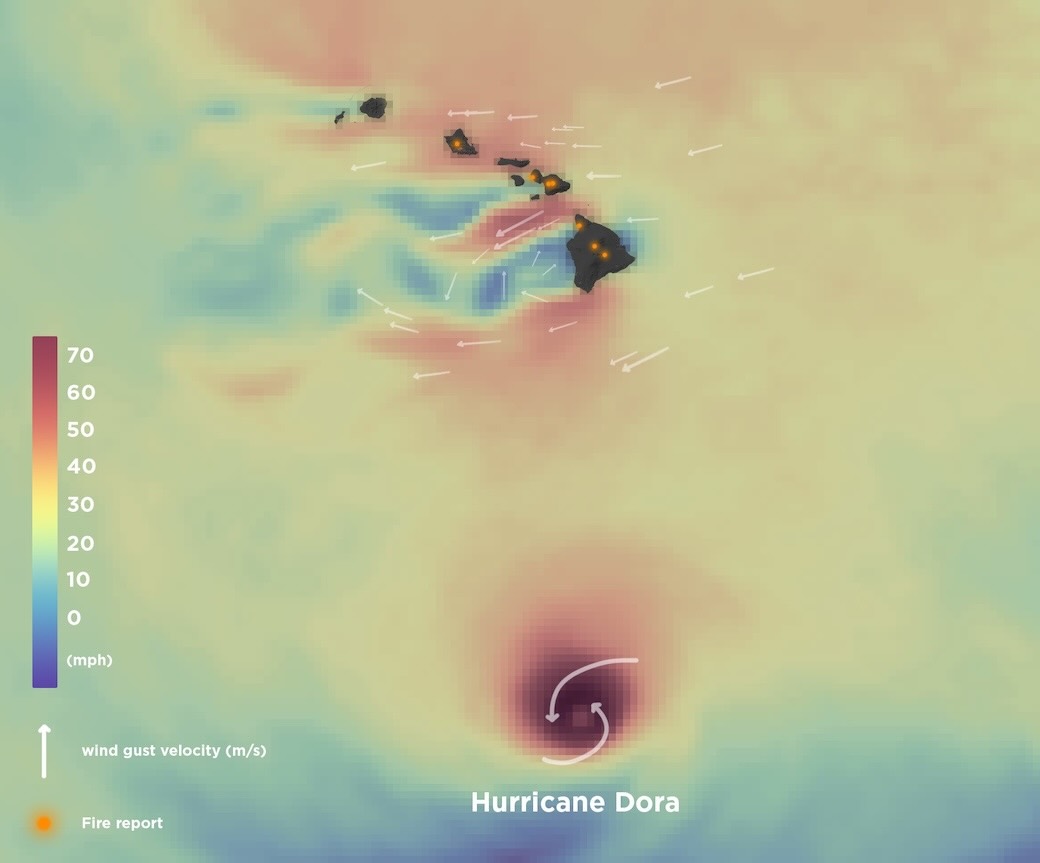 Source: Wikiwillz, CC BY-SA 4.0, via Wikimedia Commons
Source: Wikiwillz, CC BY-SA 4.0, via Wikimedia Commons
Maui was already having a drought when the forest fires happened. Twenty percent of Maui had moderate drought (level 1 of 4) and sixteen percent had severe drought (level 2 of 4). The US National Climate Assessment said that Hawaii was getting less rain than before because of human-caused climate change.
Another reason for the fires was a kind of grass that did not belong there called guinea grass. This grass can grow very fast, up to 0.49 ft (15 cm) every day, and it can get very tall, up to 10 ft (3 m). When the grasses dry out, they create a lot of dry vegetation that can catch fire easily.
The death toll of the Maui wildfires (at least 100 victims) broke the record of the 2018 Camp Fire.
Conclusion
The examples of historic fires highlight the critical role of ignition sources, fuel conditions, and weather factors in the spreading and severity of wildfires.
